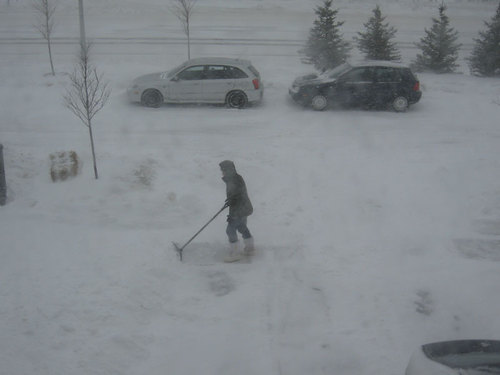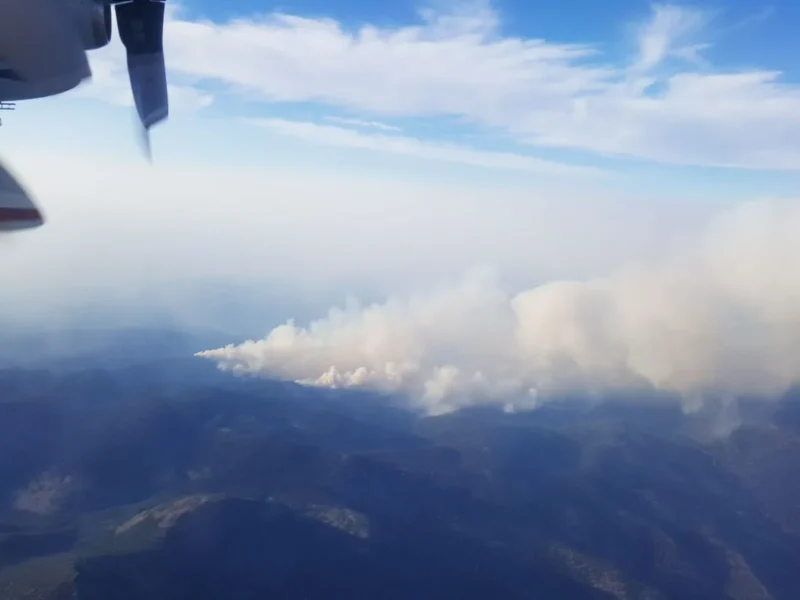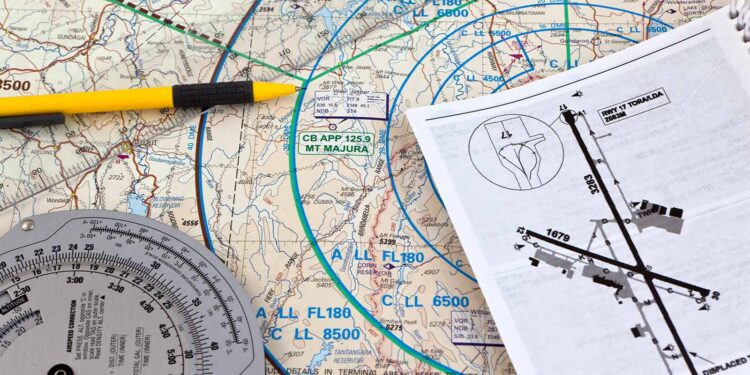Last week I was in Boston. I flew out of Buffalo because it was a signifigant cost savings over flying out of the most expensive airport in the world.
After a nice three days of relaxing, we were waiting for our return flight at the airport. I was keeping a close eye on the US Airways website for the flight status, and ADDS. I hit reload on the website and it told me that the flight was canceled! I took a look at the METAR for KBUF and saw this:
KBUF 072002Z 02011KT 1/4SM R23/1800V2400FT SN FZFG BKN005 OVC011 M02/M03 A3007 RMK AO2 P0001
Can anyone tell me why, based on the METAR alone, the flight was canceled? Assume the airport is open. :)
In anycase, I ended up renting a car with two college students trying to get back to Buffalo for “spring break”. I did all the driving :) They paid for half the car and gas.
I didn’t go flying this weekend because I was busy doing this on both Saturday and Sunday:

This was the latest communique from the CFI at Toronto Airways:
Efective April 10, 2008 Air Traffic Contol will be changing some instruction phraseology to be more in line with ICAO standards. These changes will be reflected in the next update of the AIM manual.
The term ” TAXI TO POSITION” or “TAXI TO POSITION AND WAIT” will no longer be used.
The new terms replacing this are:
“LINE UP” or “LINE UP AND WAIT”
This is not a takeoff clearance but only an instruction to line up on the runway and wait for a takeoff clearance.
AIC 9/08 Outlines all of the details, including a cool chart that shows the different (proposed) phraseology between ICAO, Canada, and the United States:

AIC 8/08 outlines some new phraseology that will help avoid confusion amongst similar call signs. In essence, ATC might state the “radiotelephony designator” after a similar call sign. For example, say there are two flights Westjet 813, and Jazz 8813. ATC will start calling you like this:
“westjet eight one three westjet”
or
“jazz eight eight one three jazz”
They do have another option as well, that is to use the civil registration for the aircraft with similar flight numbers. Especially if it is the same company. For example Jazz 318 and Jazz 818 might be:
“jazz eight one eight”
and
“jazz november delta”
There are a lot more goodies in the recent AICs that have been published that I urge you to check out. Including OCAS (Obstacle Collision Avoidance System) whereby a series of lights and even radio transmissions are automatically activated when an aircraft gets too close to an obstacle.
There is also information about new codes you might see in a TAF.
I really wish they would “push” this information to you, either via regular mail, or electronically using an RSS feed or better yet, an email.



Sorry for your flight cancellation, and thank you for the info about the steps towards more ICAO phraseology.
I did not fly in this US until now, so I was not even aware of the “Runway (xx) position and hold” phraseology. I think FAA changed to “Line up and wait” to avoid any misshap with between “position and hold” and “hold position”.
Regarding the possibility to use a combination of company name and tail number to as a call-sign, I don’t know how they would do that. At least where I fly, controllers don’t know the tail number of aircrafts flying under company flight plan. Any hint ?
http://www.plasticpilot.net
as for why the flight was cancelled, if it was based on weather, I’m going guess it’s because they don’t have a CAT II ILS? I don’t know what approaches they have in KBUF, but it’s unlikely they’d see the runway in those conditions. More importantly, what was the forecast? Was the weather supposed to get worse than that at the proposed ETA?
I think the flight should;ve gone.. An airliner has enough de-icing/anti-icing equipment to avoid all the bad stuff, and everything else seems fine.. Maybe something with the GFA or something? No clue.
I didn’t capture the TAF for the airport at the time of the cancellation. However the flight it just over an hour long.
The runway in use (23) did have an ILS, and from what I can tell, it’s CAT 1.
http://www.airnav.com/airport/BUF/ils/23
The visibility is right at minimums for a Cat 1 approach. If it were to drop any lower an approach ban would go into effect. Even with 1/4SM and 1800 RVR, there is a good possibility for a missed approach, so it’s possible they decided to just cancel the flight rather than waste everybody’s time by returning to the departure airport.
its quite possible that flow measures canceled the flight. Obviously Buffalo was at a lower acceptance rate, so the flow times may have pushed back the flight to far to make it reasonable to go.
So is “LINE UP” any different than “LINE UP AND WAIT”?
I mean, you have to wait for takeoff clearance either way, right?
Yes.
“Line UP” = “Taxi to position”
“Line up and wait” = “Taxi to position and hold”
I would expect that you would get your take off clearance sometime before you are ready to go on the runway.
For example:
You: “Ready for take off runway 33 when able”.
ATC: “Line up”
*while you are taxing onto the runway*
ATC: “Cleared for take-off runway 33…”
or
You: “Ready for take off runway 33 when able”.
ATC: “Line up and wait runway 33”
You: “Line up and wait runway 33” (need to readback because its a hold instruction).
*some time passes are you are waiting on the runway*
ATC: “Cleared for take off”
Simplified communications, but I think that may make the picture more clear.
I totally beleive those METARs, myself and 8 other guys we’re trying to make it home to Winnipeg from Dayton, Ohio in a Piper Warrior and two 172’s. We got snowed in for 2 and a half days!!
I think line up and line up and wait is poor phraseology. Position and Hold is very clear.
Line up, should never be used. You either get the clearance to takeoff immediately or positon and hold (line up an wait).
For those looking for an RSS feed of the AIPs, I’ve set one up here:
AIP RSS feed
and while I was at it, I made a feed for new pubs from TC:
TC publications
I’ve just discovered this blog – good reading for Canadian pilots. Thanks! Reading the archives seems to be broken, however. When flipping back through previous pages, the same content as is on the front page is displayed.